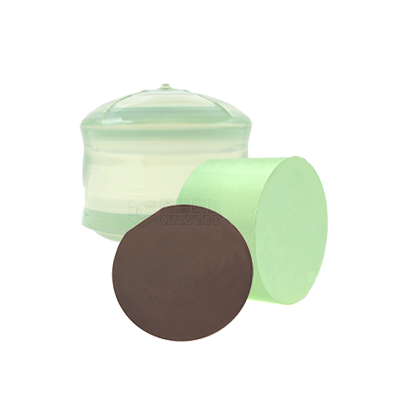Table of Contents
Piezoelectric innovation has been rapidly advancing over recent years, with Lithium Tantalate being a material that has provided many opportunities. Piezoelectricity is the ability of certain materials, including Lithium Tantalate, to generate an electrical charge in response to applied mechanical stress. Here we explore the many applications of this technology and delve into the current successes and hurdles in the field of piezoelectric innovation.
Understanding Piezoelectricity and Lithium Tantalate
To understand the unique properties of Lithium Tantalate, it's essential to understand the concept of piezoelectricity. Piezoelectricity is a phenomenon in which certain materials generate an electrical charge in response to applied mechanical stress. Conversely, applying an electrical charge to these materials can cause them to deform, flex, or vibrate. Lithium Tantalate has been a promising material in this field due to its high piezoelectric coefficients, high optical damage thresholds, chemical durability, low acoustic loss and high temperature stability.

Applications in Industry and Research
The piezoelectric properties of Lithium Tantalate are being widely explored in developing sensors and actuators for various industrial and research applications. The unique properties allow sensors to be used in a range of industries, such as seismic activity monitoring, medical diagnostics, and environmental sensing. In seismic activity monitoring, Lithium Tantalate is used as a highly sensitive sensor to detect and measure the magnitude and frequency of seismic waves.
In medical diagnostics, Lithium Tantalate is used to create highly sensitive transducers for detecting minute physical deformations, such as those found in soft tissues. It is also used in environmental sensing, where it can be used in air quality sensors to detect particulate matter, temperature changes and other environmental factors.
Actuators and transducers are also being developed that rely on the properties of Lithium Tantalate. In robotic applications, Lithium Tantalate-based actuators provide the precision and speed required for efficient movement, enabling faster and more precise movement of machines.
In aerospace, the reliable operation over a wide temperature range and high resistance to vibration of Lithium Tantalate makes it an ideal candidate for sensors within aircraft and other key systems.
Researchers are exploring the use of Lithium Tantalate to enable emerging technologies. In nanotechnology, Lithium Tantalate-based transducers can be used to measure nanoscale vibrations, and biomedical engineering is exploring Lithium Tantalate for a variety of applications such as acoustic imaging, ultrasound therapy, and bone conduction hearing aids. There are also many opportunities for Lithium Tantalate to be used in the field of energy harvesting.
Case Studies and Success Stories
Lithium Tantalate is being widely deployed in the development of sensors, actuators and transducers, with a wide range of industry and research culminating in successful products. A clear success story is in the development of medical technology, with many companies using Lithium Tantalate to create sensors and transducers to detect deformations of soft tissues.
Other case studies include the use of Lithium Tantalate as sensors in aerospace applications, where they are used to monitor and control critical system variables in real-time.

Challenges and Future Prospects
One of the biggest challenges for Lithium Tantalate applications is cost. While Lithium Tantalate has numerous benefits and opportunities, manufacturing costs can be substantial. Another challenge is the development of alternatives to avoid supply issues for raw materials.
There is also ongoing research into 3D printing Lithium Tantalate for specific applications, which may also reduce costs.
In terms of future prospects, the opportunities for Lithium Tantalate growth are vast, given the wide range of applications already identified with many new innovations yet to emerge.
The advances in nanotechnology are promising, as are future advancements in biomedical engineering and energy harvesting. Additionally, research into the use of piezoelectricity in advanced textiles suggests there are further opportunities ahead.
Conclusion
The use of piezoelectric materials, specifically Lithium Tantalate, is transforming how many industries operate, how we measure and control variables and how new technologies can evolve. The unique properties of Lithium Tantalate have led to a range of innovative solutions already in use. As research continues, and new opportunities emerge, it is likely that Lithium Tantalate will become a more widely used and affordable material for innovative solutions.

